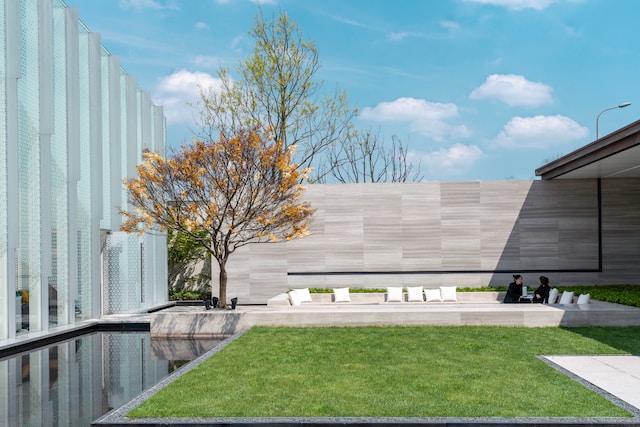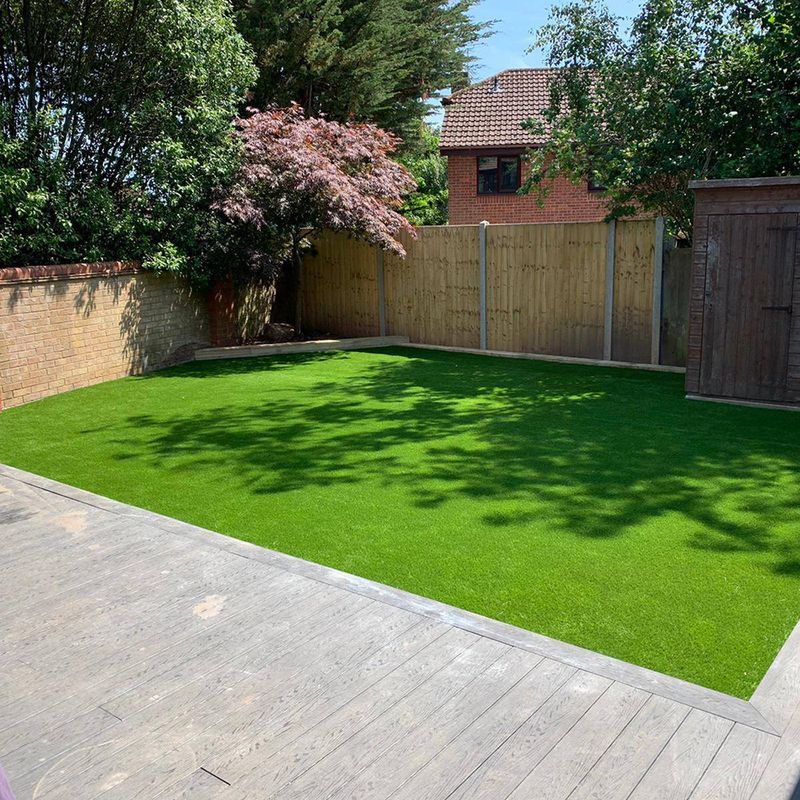Weeds have a nasty habit of popping up even in places where you’d least expect them to. Unfortunately, this includes artificial grass.
The good news is:
By using a weed control fabric or weed killer for artificial grass and through general maintenance, you can keep your artificial grass in mint condition and enjoy its benefits for many years to come.
At Landscaping Superstore, we’re here to show you exactly how to remove weeds from artificial grass.
Let’s jump right in.
Table of contents:
- Why do weeds grow through artificial grass?
- How to stop weeds growing through artificial grass
- Final thoughts
Why do weeds grow through artificial grass?
Artificial grass faces a common challenge with weeds, which, much like in natural settings, exhibit an uncanny ability to grow unhindered. Indifferent to their surroundings, weeds flourish in soil, compost or any other substrate, making complete eradication a challenging task.
Remarkably, artificial grass provides an ideal environment for weed proliferation. Given the ease with which weed seeds travel in the wind, akin to other plant seeds, they have the potential to land and germinate virtually anywhere. So, when the wind carries weed seeds onto your synthetic lawn, they find a conducive space to take root and thrive amid the blades of the artificial turf.
The question is:
How do weeds grow through artificial grass?
Here’s the deal:
Upon germination, weed seeds initially rely on their internal nutrients to sustain themselves for an initial period. As these weeds develop roots, their growth becomes dependent on water or moisture. Regrettably, young weeds exhibit resilience to low moisture levels, as they need minimal water unless faced with intense heat. Even under such challenging conditions, they exert considerable effort to survive.
How to stop weeds growing through artificial grass
As we mentioned at the beginning, there are several ways to stop weeds from growing in artificial grass.
Let’s take a closer look at them.

Weed control fabric
Unlike natural grass, managing weeds in artificial turf can be more straightforward by incorporating a dedicated weed control fabric beneath the grass. While some contemporary artificial grass varieties come equipped with a built-in membrane for streamlined installation, many still benefit from an additional layer of weed control fabric to effectively minimise weed proliferation.
Now:
If you’re in the process of installing synthetic turf, it’s crucial to lay down a weed control fabric for artificial grass. Referred to as a weed membrane or weed barrier, this component acts as a preventive measure, thwarting the emergence of weeds from beneath the grass and preserving the pristine appearance of your lawn.

General maintenance
Without a weed control fabric, additional efforts are necessary to prevent the intrusion of weeds.
Let’s face it:
Maintenance plays a crucial role in preserving any outdoor feature, and artificial grass is no exception. While mowing is unnecessary, ensuring proper upkeep for drainage and appearance is essential.
At the end of the day, accumulation of leaves, moss and debris is inevitable and can impede drainage, providing an ideal environment for weed growth. So, regularly cleaning the surface and removing debris through brushing minimises the likelihood of weed colonisation and maintains effective drainage.
To mitigate the risk of airborne weed seeds, employing tools such as a leaf blower, stiff brush or plastic rake proves beneficial. Trimmers and strimmers for hedges and overhanging trees can further reduce the influx of leaves onto the grass, which can help limit seed spreads and weed growth.
But wait! There’s more:
For targeted weed control, using weed killer for artificial grass is a viable option. Applying it at least twice a year across the entire area promotes diminished weed growth. This proactive approach allows for easy removal of any weeds that may emerge during use.

At this point you’re probably wondering:
Do you need to clean artificial grass?
Indeed, you do, especially if you have pets. Head over to our guides on how to clean artificial grass when you have pets to find out how to do this.
Final thoughts
There are multiple ways you can go about keeping your artificial grass weed-free. You can fit a weed control fabric, apply weed killer for artificial grass or regularly clean your artificial grass with a rake and leaf blower.
And that’s how to remove weeds from artificial grass properly.
Remember:
Proactive maintenance and early intervention are key to keeping artificial grass free from weeds, dirt and debris.














